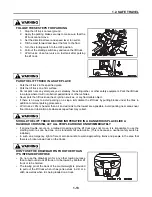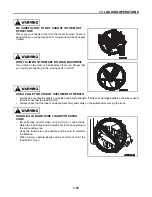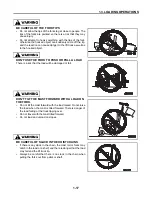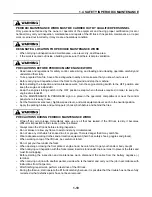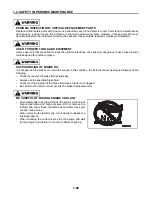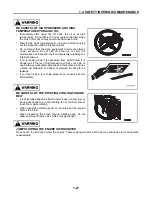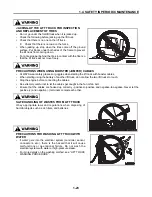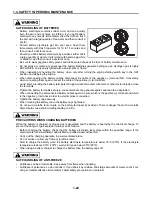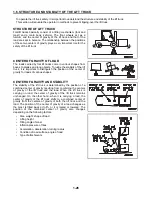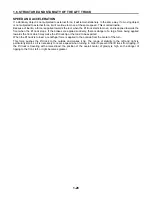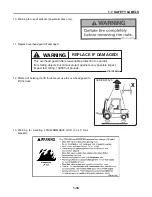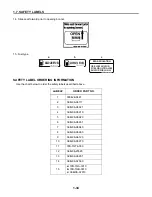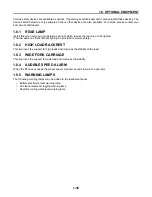
1.6. STRUCTURE AND STABILITY OF THE LIFT TRUCK
1-26
1.6.
STRUCTURE AND STABILITY OF THE LIFT TRUCK
To operate the lift truck safely, it is important to understand the structure and stability of the lift truck.
This section will educate the operator in methods to prevent tipping-over the lift truck.
STRUCTURE OF LIFT TRUCK
Forklift trucks basically consist of a lifting mechanism (fork and
mast) and a main body (vehicle). The front wheels act as a
fulcrum and the center of gravity of the lift truck and that of the
load are kept in balance. The relationship between the positions
of these two centers of gravity plays a very important role for the
safety of the lift truck.
CENTER OF GRAVITY OF LOAD
The loads carried by forklift trucks come in various shapes from
boxes to planks and long objects. To judge the stability of the lift
truck, it is important to distinguish the position of the center of
gravity for loads of various shapes.
CENTER OF GRAVITY AND STABILITY
The stability of the lift truck is determined by the position of a
combined center of gravity resulting from combining the centers
of gravity of the lift truck and the load. When the lift truck is
carrying no load, the center of gravity of the lift truck remains
unchanged. On the other hand, when it is carrying a load, the
center of gravity of the lift truck shifts to a combined center of
gravity from the centers of gravity of both the lift truck and the
load. The position of the center of gravity of a load changes as
the mast is tilted back or forth, or it is raised or lowered. The
position of the combined center of gravity also changes
depending on the following factors.
• Size, weight, shape of load
• Lifting height
• Tilting angle of mast
• Inflation pressure of tires
• Acceleration, deceleration, turning radius
• Condition of road surface, angle of road
• Type of attachments
Summary of Contents for CX20 Series
Page 21: ...1 SAFETY...


